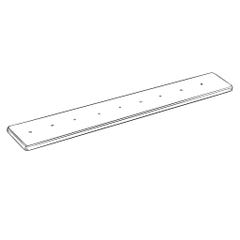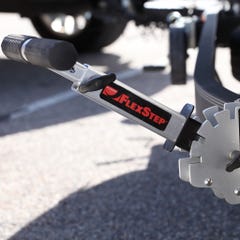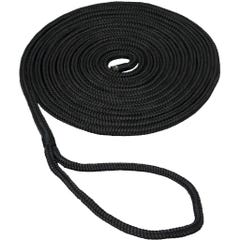Are You That Guy? — A Discussion on Boat Ramp Etiquette
June 17, 2022 8 min read


So let’s say you’ve slipped out for some pre-dawn bassin’ and are coming off the water as various species of wormless birds are migrating to the ramp.
Contents
- 1. A Discussion on Boat Ramp Ettiquette
- 2. Do Your Homework
- 3. Prep to Launch in the Staging Area, Not on the Ramp
- 4. Know the Flow
- 5. Stay in Your Lane
- 6. Far Out
- 7. You’re Here to Go Out There, Not Sit Here
- 8. Small Things Add Up
- 9. Paddleboarders at the Ramp and What to Do About It
- 10. Be Patient, Relax
A Discussion on Boat Ramp Ettiquette
A two-man crew with a rough-looking ski/fish have backed it down into the water with the transom straps still in place and the trailer has floated under the boat until it has started coming apart. Now one bunk, along with a chunk of the trailer frame, is jutting out of the water behind the boat and another bunk is starting to spin abeam under it while conversation between the boat’s crew rapidly blows through the “hmmm, what’s going on here?” phase of unfolding disasters.
The bow of the boat wants to spin to starboard as they struggle with the stern. You are to starboard. Your boat is to starboard.
The courteous thing to do at this moment is to refrain from pointing out that their boat is still strapped to the trailer, which may be no longer relevant, given the emerging debate over whether the thing below the boat could still be considered a trailer.
What these boaters need is as much room as possible to play out whatever is going to happen next. Discretion is the better part of valor, and it can be a big chunk of boat ramp etiquette, too. Keep your mouth shut, and get your boat out of harm’s way.
The preceding true story brings us to Boat Ramp Etiquette Point Numero Uno: Do your homework!
Do Your Homework
If you catch yourself thinking something like, “Oh, it’ll probably be all right, at least this time,” remember that what you really mean is, “I better take care of that now, while I don’t have a big and possibly hilariously-entertaining-from-a-safe-distance problem on my hands.”
The boat ramp is not the place to see if the motor will crank.
The boat ramp is not the place to see if the motor will crank. If there’s any doubt whether your rig is ready to rock, you shouldn’t be at the ramp. Things that should be done at home: Check the battery, check the electronics, use water muffs or a tank to test the engine. Assess the roadworthiness of your trailer — and the structural integrity, if it’s come to that.
Prep to Launch in the Staging Area, Not on the Ramp
Boat Ramp Check List
- Drain plug in?
- Battery on?
- Transom saver off?
- Transom straps off?
- Key and kill switch?
- Dock lines fixed to cleats or bits?
Boat ramps get busy. Even if you have the place to yourself when you roll up, expect company.
One thing that will slow down traffic at a boat ramp is boaters fiddling with their vessels after they are on the ramp, doing things that should have been done in the parking lot, or making multiple trips between their vehicle and their docked boat.
If you’re going to spend 30 minutes looking for your drain plug, and then 30 more looking for the back-up drain plug, that’s fine. Just don’t expect everyone behind you at the ramp to want to spend their day the same way.
The launch/load staging area may not be formally defined; sometimes it’s simply as far out of the way as you can get until you are ready to get in line to launch. Everything that you don’t do at home but that is not directly about getting your boat off your trailer and docked, or loaded back on the trailer and hauled out, should be done in the staging area.
The only exception — the only job to save for on the ramp, wheels at the waterline — is unhooking your winch strap and safety chain when launching, or hooking up the winch strap, winching it down, and connecting the safety chain before pulling your loaded boat from the water.
Fishing tackle, ski gear, sun tan lotion, pet life jackets — deal with it in the staging area, or deal with it on the water.
Coming off the water, your clean/drain/dry routine, stowing gear, and getting road-ready should all happen back in the staging area too.
Know the Flow
There are some oddball launches out there, and some tricky ones. They are not as predictable as football fields. One aspect of prepping to launch is understanding the layout of a ramp. If you are at an unfamiliar launch, take a recon on foot.
Make sure you know the traffic flow, and make note of the particulars and potential hazards. Observe where people are parking and any other apparent local customs — though it’s a good idea to also read the signage. It might be that the 10 people who got there ahead of you never read the signs.
Stay in Your Lane
Lots of boat ramps are single-lane set-ups meant for one trailer at a time on the ramp. The busy places are usually multi-lane, with two and even three lanes adjacent lanes. Some are superhighways of trucks pushing trailers in reverse, and on reservoirs that see big water fluctuations over the course of a year, it can be a long way to the water.
It’s one thing to be slow. Careful and deliberate are the two best techniques for staying out of the middle of a boat ramp tragicomedy. It’s one thing to forget something until you are about to drop your boat in the water. May you live long enough to have your first senior moment. But if you are slow and/or you forget something and you are straddling two lanes of a multi-lane ramp, trouble soon comes.
Use one lane and stay in it. When in doubt, simply stay as close as you comfortably can to the dock on your side of the ramp.


Far Out
This uncool, but you see it: someone launches their boat and then makes fast at the foot of the dock, forcing the next boat to maneuver around them to an available spot or, worse, wait to launch because the first boat is in the way.
Whether driving off the trailer or lining your boat, move to the furthest reasonably accessible docking. Doing so will also make piloting out of ramp area boat traffic a little easier.
You’re Here to Go Out There, Not Sit Here
The main thrust of boat ramp etiquette is this: be prepared, be efficient, use the facilities you need and are entitled to for launching or loading, then free things up for the next boater and get on with your day.
Some ramps have posted time limits, or a maximum length of time you’re allowed to stay tied up at the dock.
Some ramps have posted time limits, or a maximum length of time you’re allowed to stay tied up at the dock. Ten to 15 minutes is common. Other locales may not have posted limits but have adopted novel strategies for keeping traffic moving at the ramp. For instance, in Canada, they have put the mosquito to work: Northwoods skeets could drain an adult human in minutes if they were going for the record. You are either in the woods bleeding out at a rate of five-millionths of a liter per shot or on the water collecting the fishing memories of a lifetime. There’s not much lingering at the ramp. Panacea, Florida; northern Michigan; the Ribdon River on Alaska’s North Slope; North Park, Colorado, in June — these are places where biting insects can be counted on to enforce ramp etiquette.
Other places have used glass-eating Erector Set boat dock designs effectively to dissuade slow-mo launching and loading.
Small Things Add Up
On a hot day, a boat ramp is a busy place. On a busy day, a boat ramp can be a hot place. Small courtesies help keep things cool.
If you see someone struggling, offer a helping hand. We all were there for the first time once, and may be again if a spell of twofootitis lands us in a new and unfamiliar boat. A boater launching or loading single-handedly may appreciate a moment of help, especially in conditions of wind, current or high boat traffic.
When launching or loading at night, cut your headlights on the ramp. The incline puts your lights right in the eyes of the people waiting, and they don't do you much good since you're backing up anyway.
Lost straps, u-bolts off leaf springs, unidentifiable bits of ancient trailers that spontaneously self-dismantle upon contact with water — things show up on the boat ramp. If there’s debris, pick it up.
Paddleboarders at the Ramp and What to Do About It
Somebody took a surfboard and an oar and, after some refinements, those things are everywhere now. Likewise, fishing kayaks did not formerly exist but now are deluxe-ified, adding another new mode of use to the water, and our access points to it. The upshot is that you are going to encounter hand-launch craft on the boat ramp.
In some cases, they may have plenty of other perfectly usable shoreline for launching, and in other cases, the ramp may be the best or only launching point for all vessels.
In some places, it’s unregulated, and “live and let live” is your path forward. In other places, it may be regulated — no hand-launching on the trailered watercraft ramp. “Live and let live” plus a chat with a ranger may be prescribed, if you feel that strongly about it.
Be Patient, Relax
Above all, remember that you’re not at work but will be soon enough. You’re doing this because you like to.



